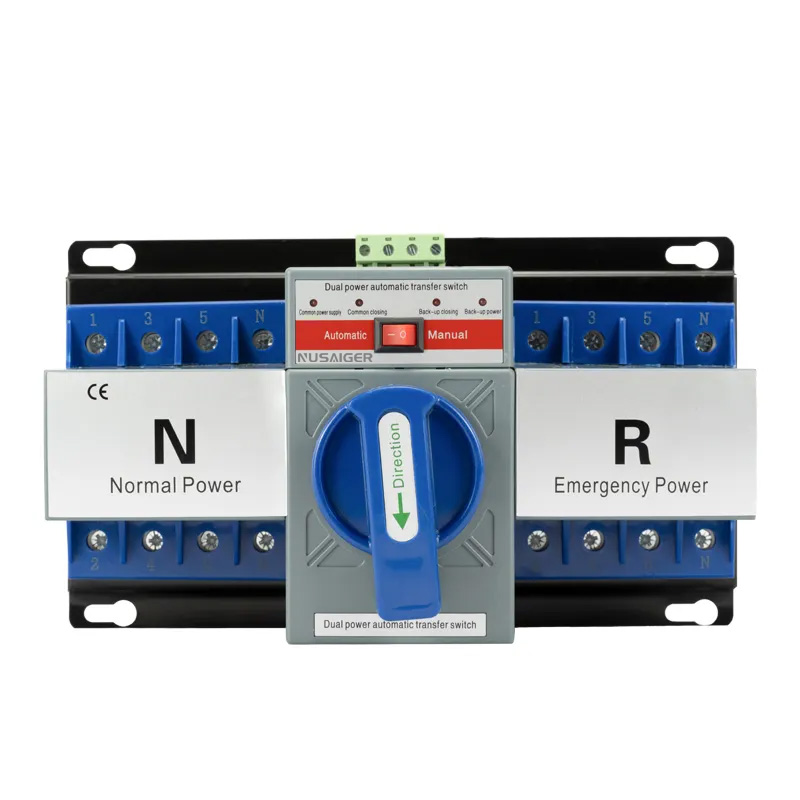The Future of Dual Power Automatic Transfer Switches: Smart Grids, IoT Integration, and Intelligent Energy Management
The world of electrical power management is evolving rapidly, and dual power automatic transfer switches (ATS) are at the forefront of this transformation. With the rise of smart grids, IoT-enabled devices, and intelligent energy management systems, ATS technology is becoming more sophisticated, offering enhanced reliability, efficiency, and real-time monitoring.
1. Integration with Smart Grids
Smart grids represent the next generation of electrical networks, offering dynamic energy management and real-time data analysis. ATS systems integrated with smart grids can:
- Automatically coordinate load transfer based on grid conditions.
- Respond to peak load demands and renewable energy availability.
- Enhance system resilience during blackouts and grid disturbances.
This integration allows dual power systems to optimize energy usage while maintaining uninterrupted power supply to critical loads.
2. IoT-Enabled ATS Devices
The Internet of Things (IoT) is transforming ATS monitoring and control. IoT-enabled ATS devices provide:
- Remote monitoring of power sources, load conditions, and switch status.
- Predictive maintenance through continuous data collection and analysis.
- Alerts and notifications via mobile apps or centralized dashboards.
- Integration with other smart devices for automated load shedding and energy optimization.
IoT connectivity allows facility managers to proactively address potential issues, minimizing downtime and reducing maintenance costs.
3. Intelligent Energy Management
Modern ATS solutions are increasingly incorporating intelligent energy management features, including:
- Real-time load balancing between main and backup sources.
- Dynamic prioritization of critical and non-critical loads.
- Integration with renewable energy sources such as solar and wind.
- Energy usage analytics for improved operational efficiency.
These intelligent features enable businesses and facilities to optimize energy consumption, reduce costs, and support sustainability goals.
4. Advanced Safety and Reliability Features
Next-generation ATS units offer enhanced safety and reliability through:
- Self-diagnostics and automatic fault detection.
- Overload and short-circuit protection integrated with smart monitoring.
- Remote firmware updates to maintain system security and performance.
- Integration with cybersecurity protocols to protect IoT-enabled systems.
5. Applications in Modern Infrastructure
The combination of smart grid integration, IoT, and intelligent energy management expands the applications of dual power ATS:
- Data Centers: Ensuring uninterrupted server operation with predictive maintenance.
- Hospitals and Healthcare: Reliable power for life-support and critical medical equipment.
- Industrial Plants: Optimized energy distribution and reduced downtime during grid fluctuations.
- Commercial Buildings: Integration with smart building management systems for efficient energy use.
- Renewable Energy Systems: Seamless switching between solar, wind, and grid power sources.
6. Future Trends and Innovations
Dual power ATS technology continues to evolve with several promising trends:
- Artificial intelligence (AI) for predictive load management.
- Cloud-based ATS management for centralized monitoring of multiple sites.
- Energy storage integration to support microgrids and off-grid applications.
- Compact, modular designs for easier installation and maintenance.
These innovations will enhance the reliability, efficiency, and intelligence of electrical power systems worldwide.
7. Conclusion
The future of dual power automatic transfer switches is closely linked to the development of smart grids, IoT integration, and intelligent energy management. Modern ATS systems not only provide uninterrupted power but also contribute to energy efficiency, sustainability, and real-time monitoring. By adopting next-generation ATS solutions, businesses and infrastructure operators can ensure reliable, safe, and optimized power delivery while preparing for the evolving demands of smart electrical networks.



